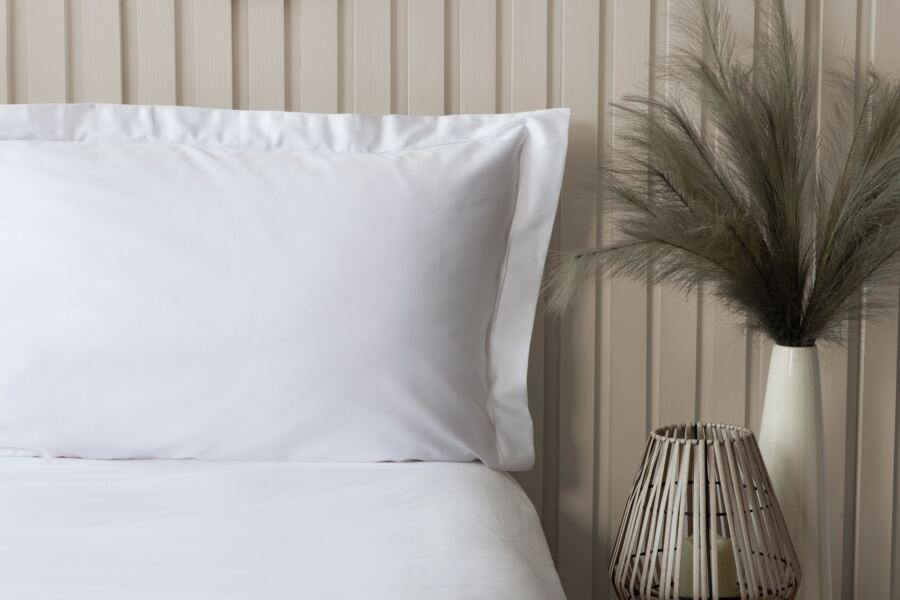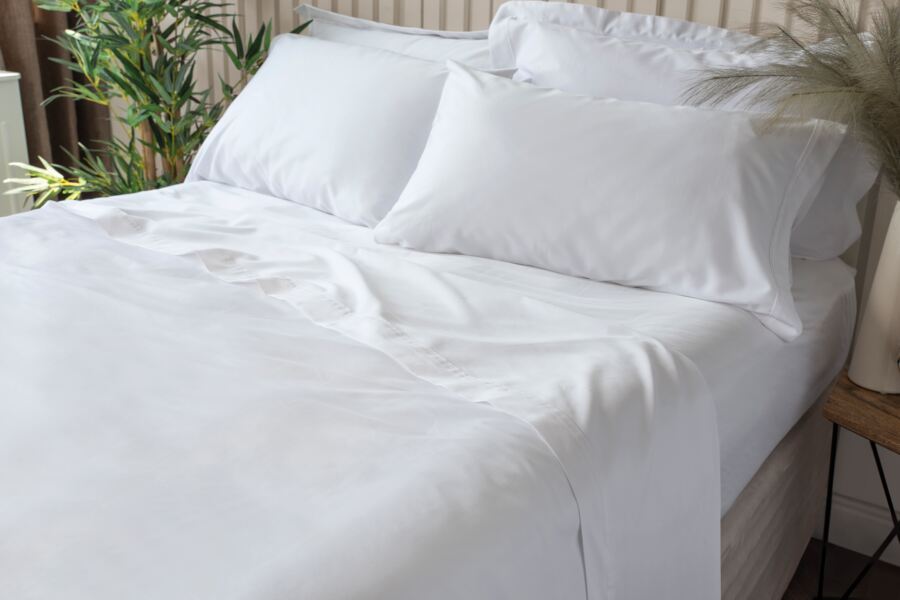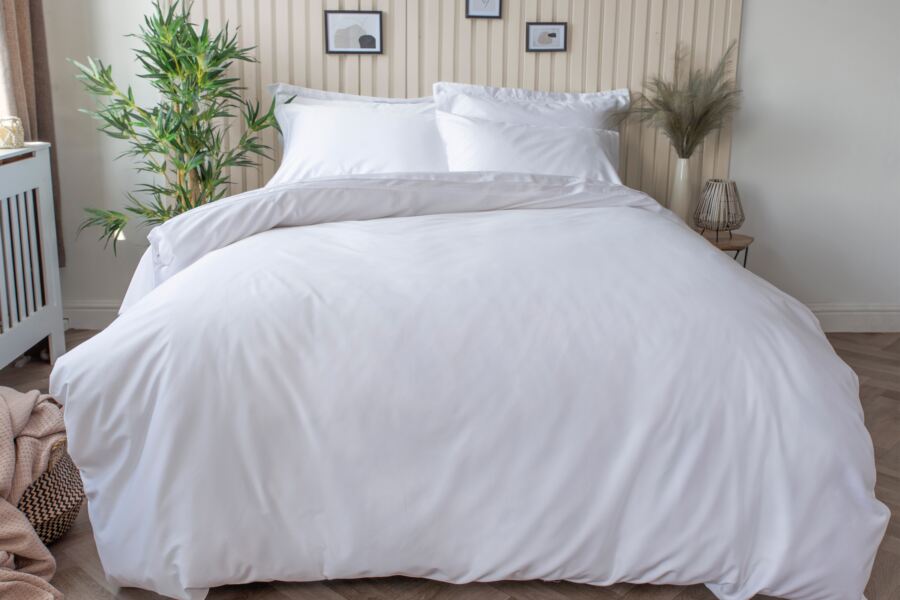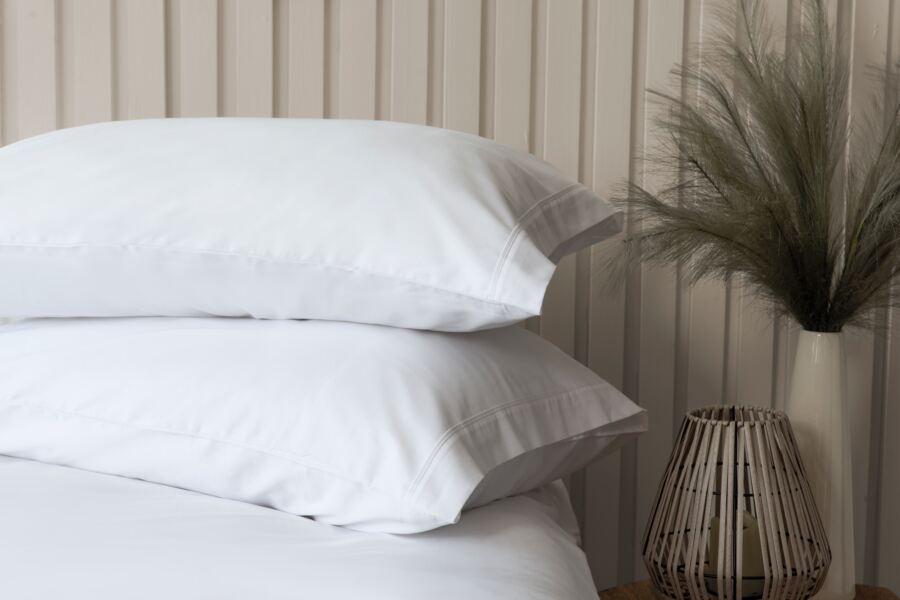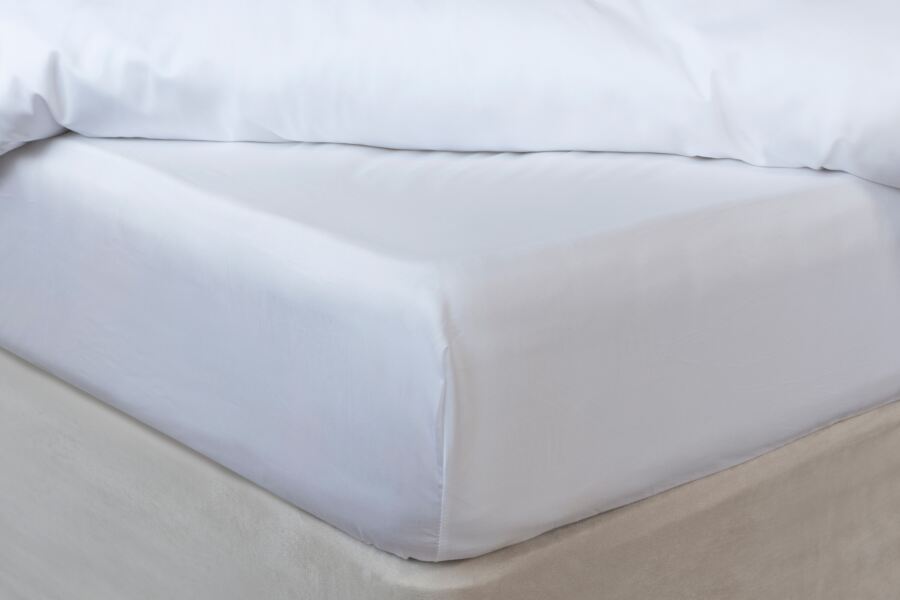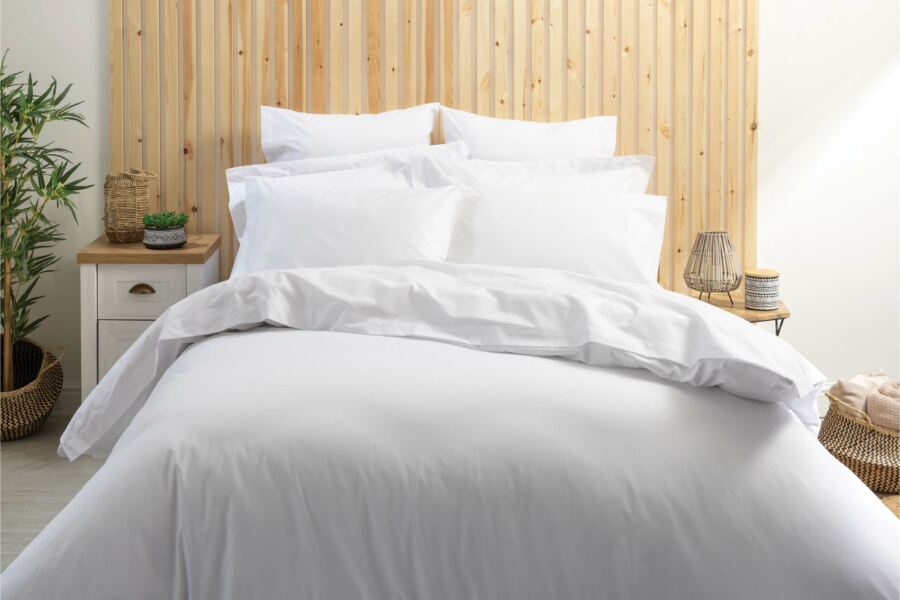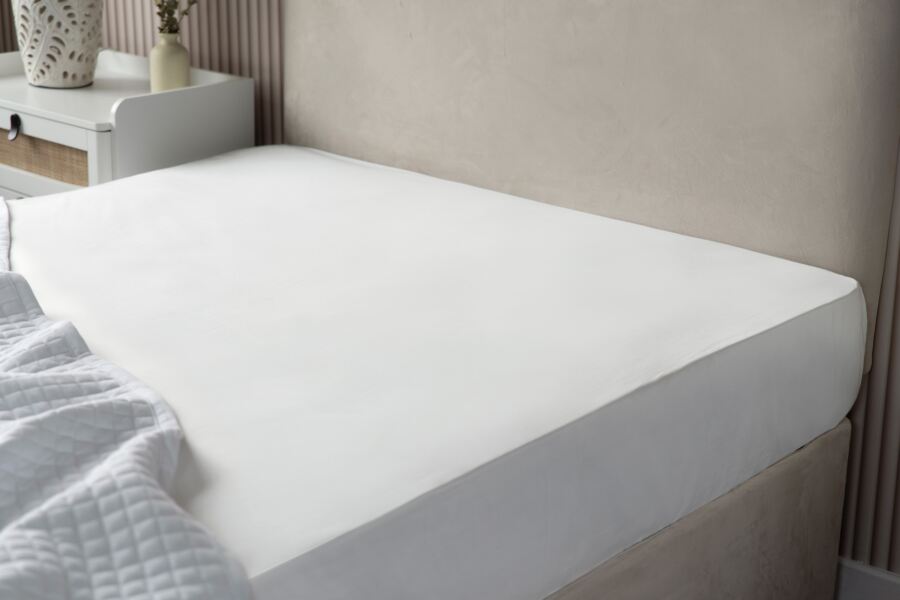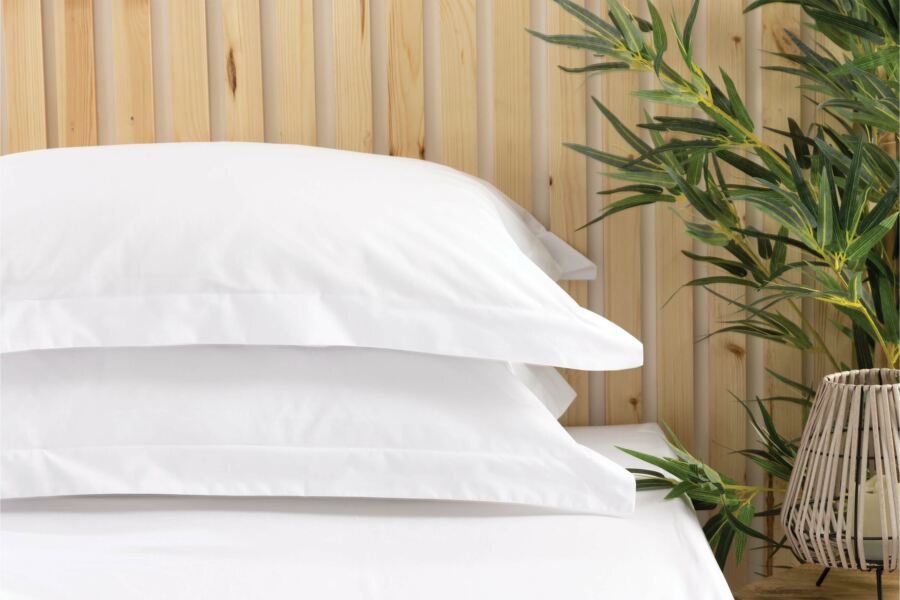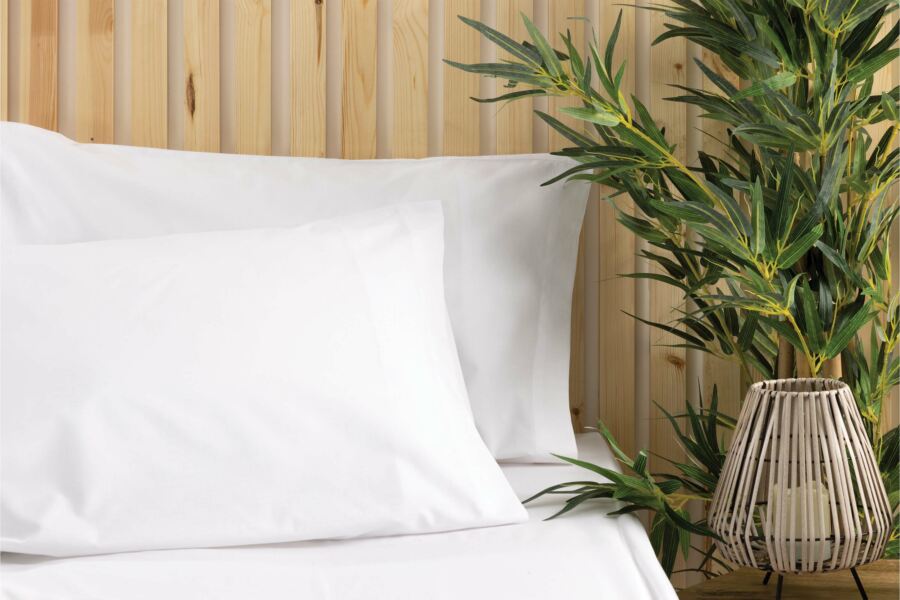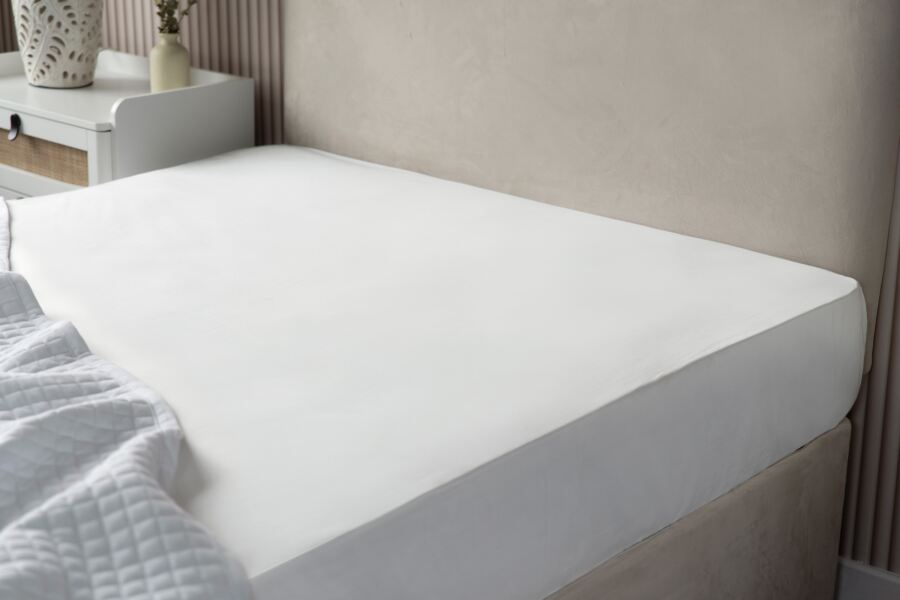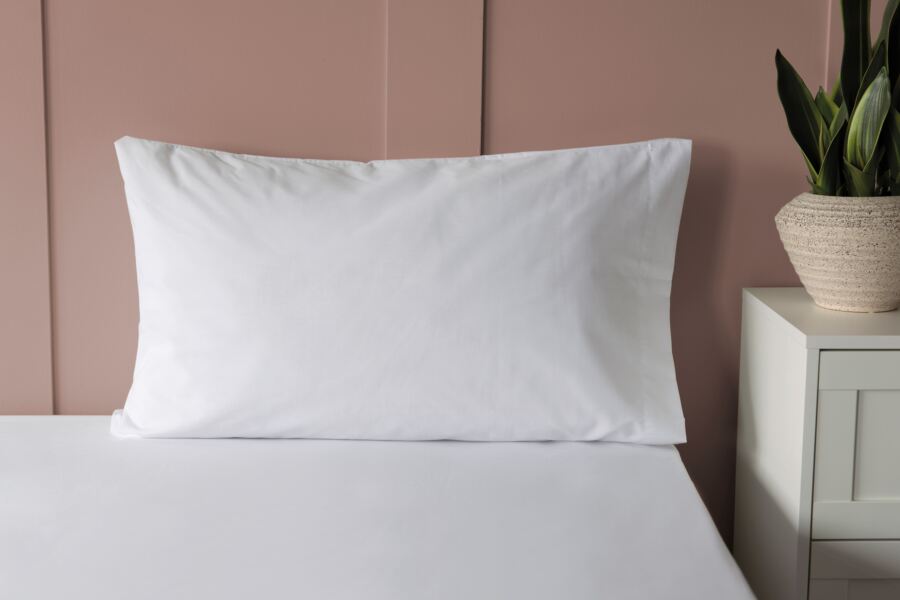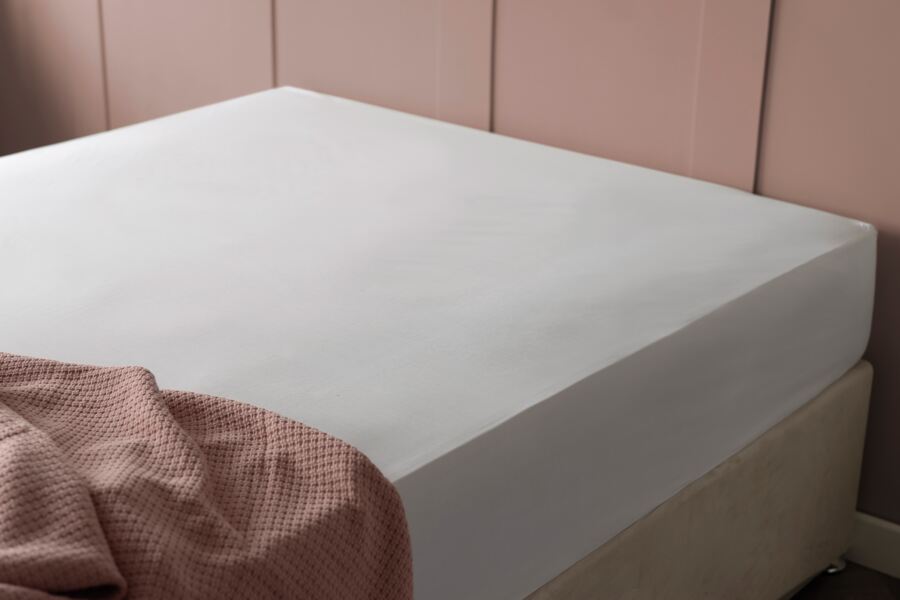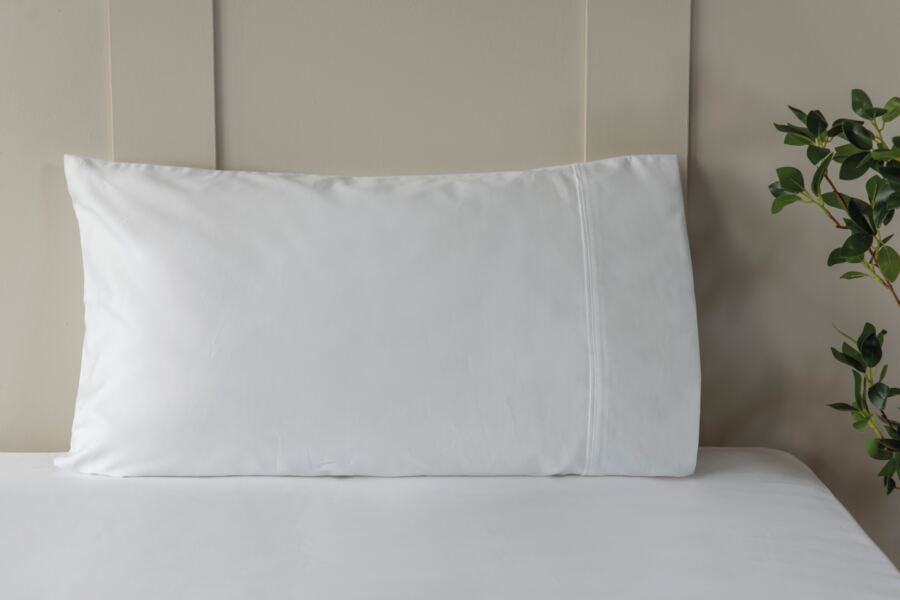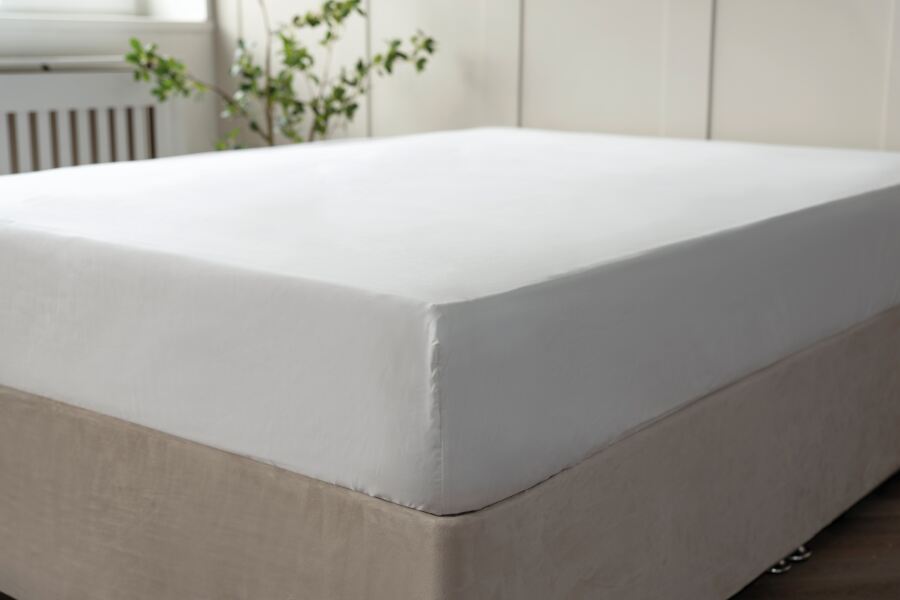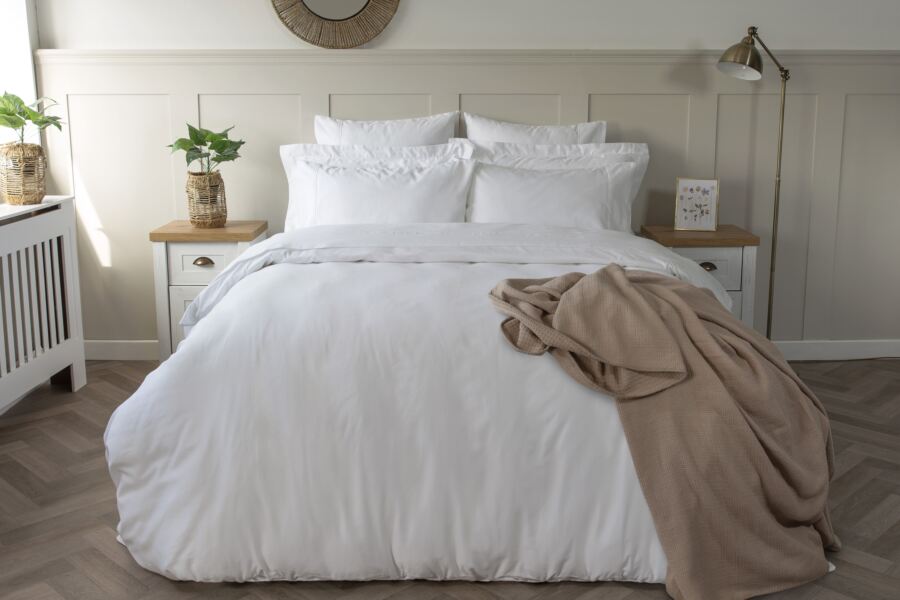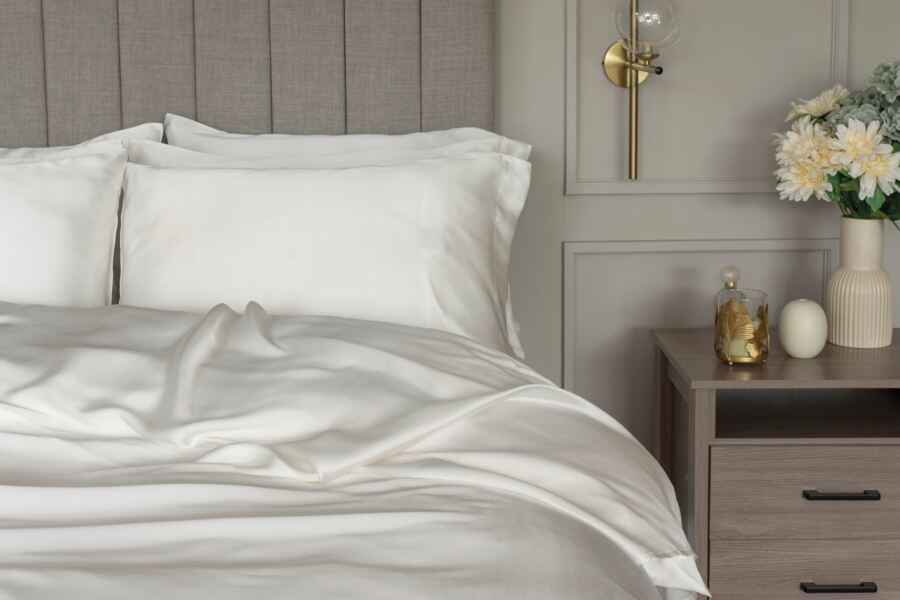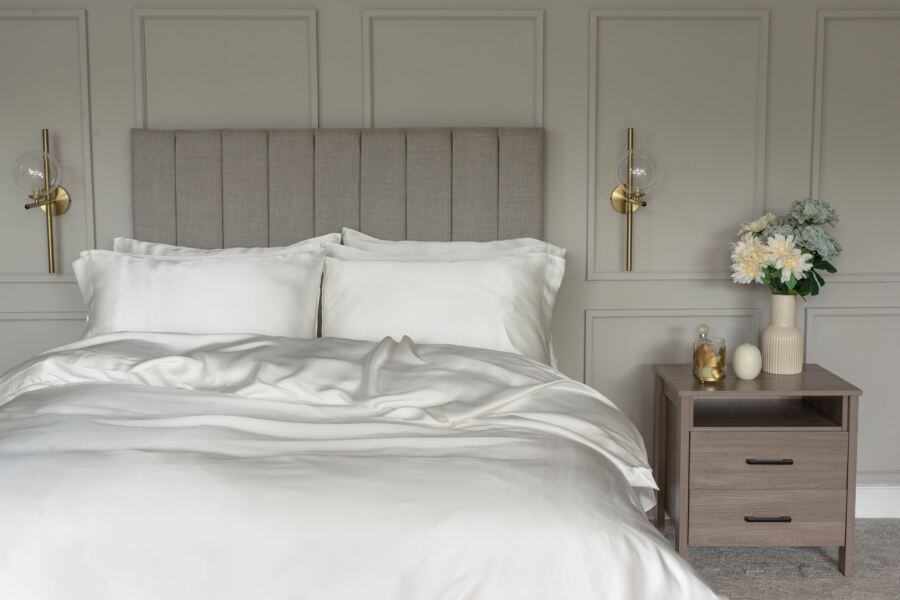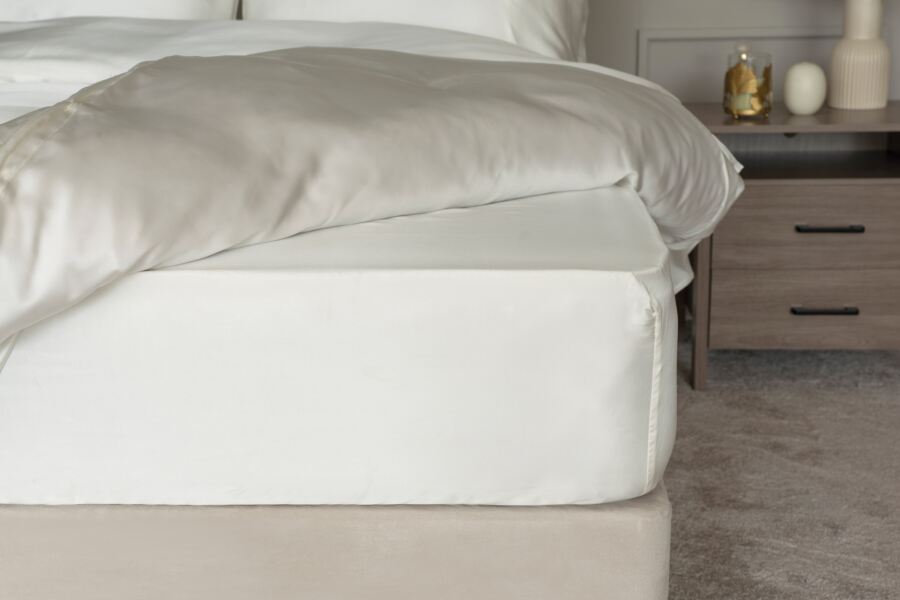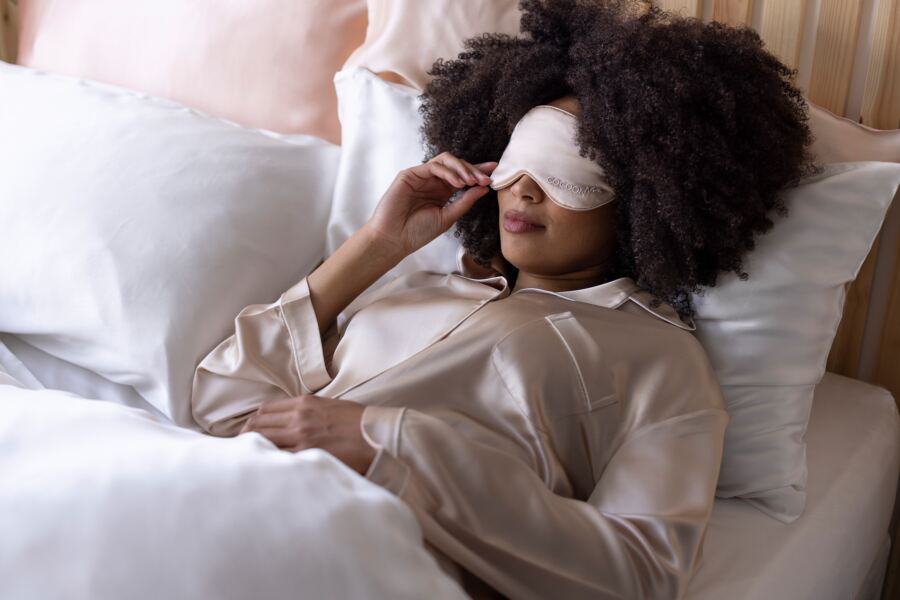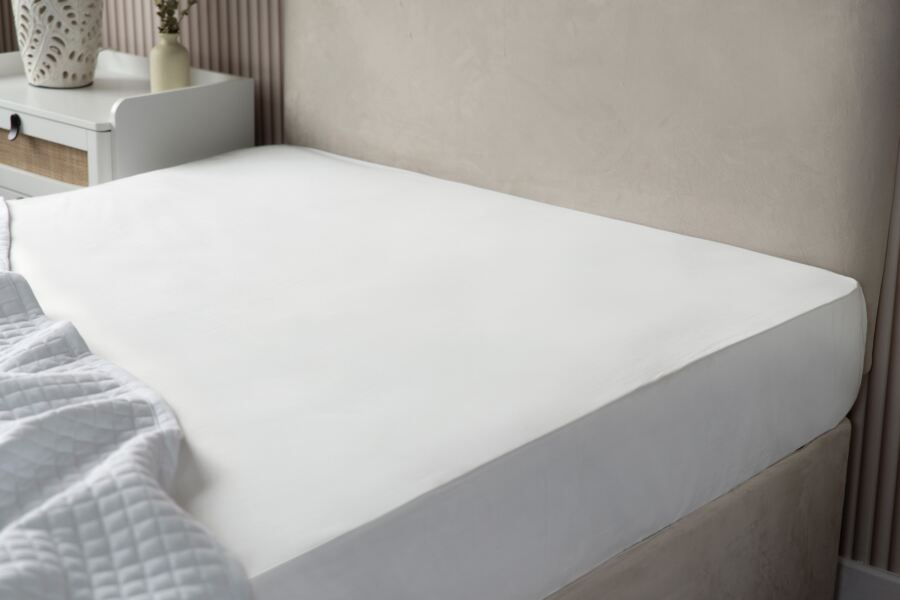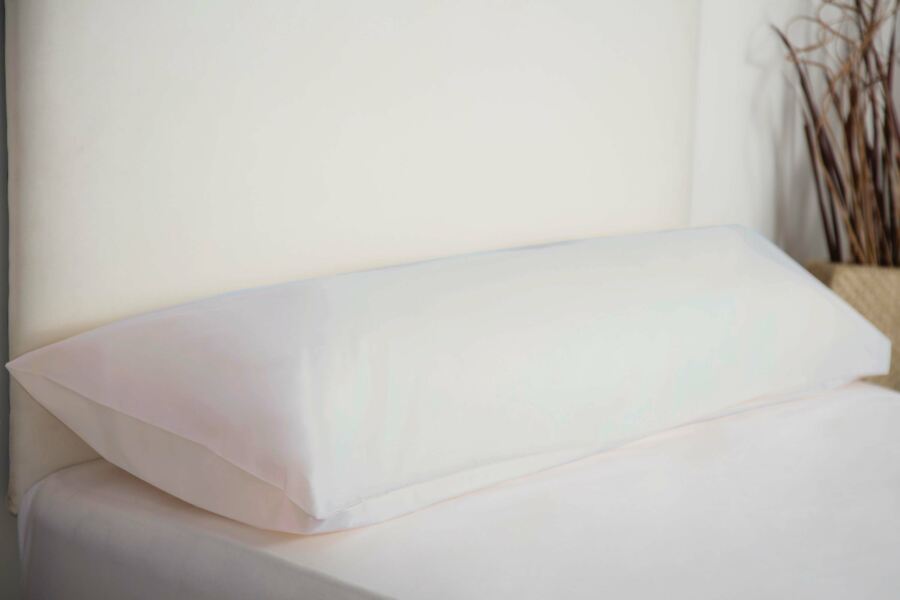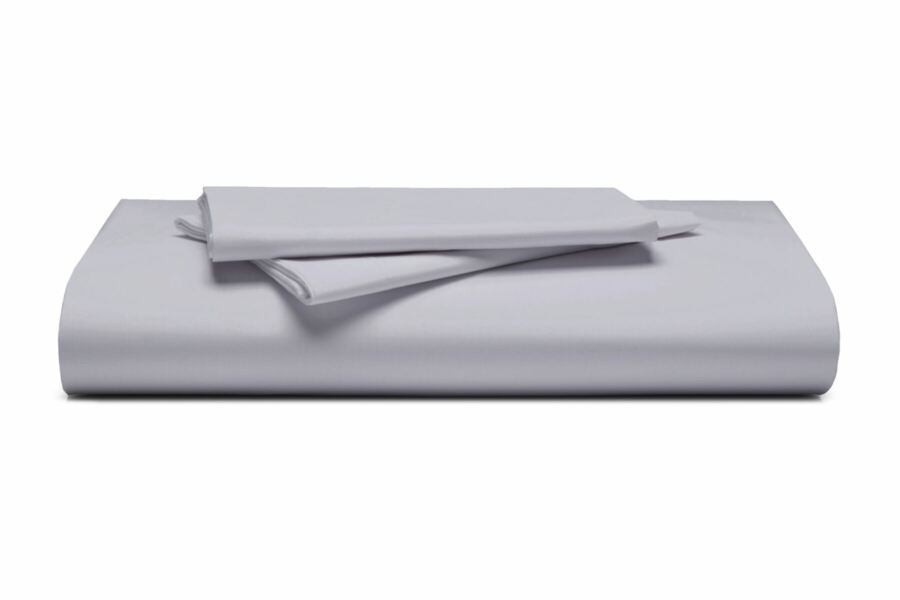Table of Contents
- The Benefits of Wrinkle-Free Bed Linen
- The Best Fabrics for Wrinkle-Free Sheets
- Choosing the Right Size Bedding for Fewer Wrinkles
- Which Fabrics Tend to Wrinkle the Most?
- Why Do Some Fabrics Wrinkle More Than Others?
- How to Care for Wrinkle-Prone Bed Linen
- FAQs
The Benefits of Wrinkle-Free Bed Linen
Beyond their polished appearance, wrinkle-free bed linen offers plenty of other benefits, including:
-
Smooth finish: There's nothing better than the soft feeling of wrinkle-free bedding against your skin.
-
Better sleep quality: The combination of smoothness, visual appeal, and fewer allergens results in a better overall sleep experience.
-
Low maintenance: Wrinkle-free sheets are easy to care for as they don't require ironing, saving you time and effort.
-
Cleanliness: The lack of wrinkles means there are fewer creases for dust mites and other allergens to hide.
There are many factors to consider when purchasing new bed linen, but prioritising wrinkle-resistance is key if you want to enjoy the abovementioned benefits.
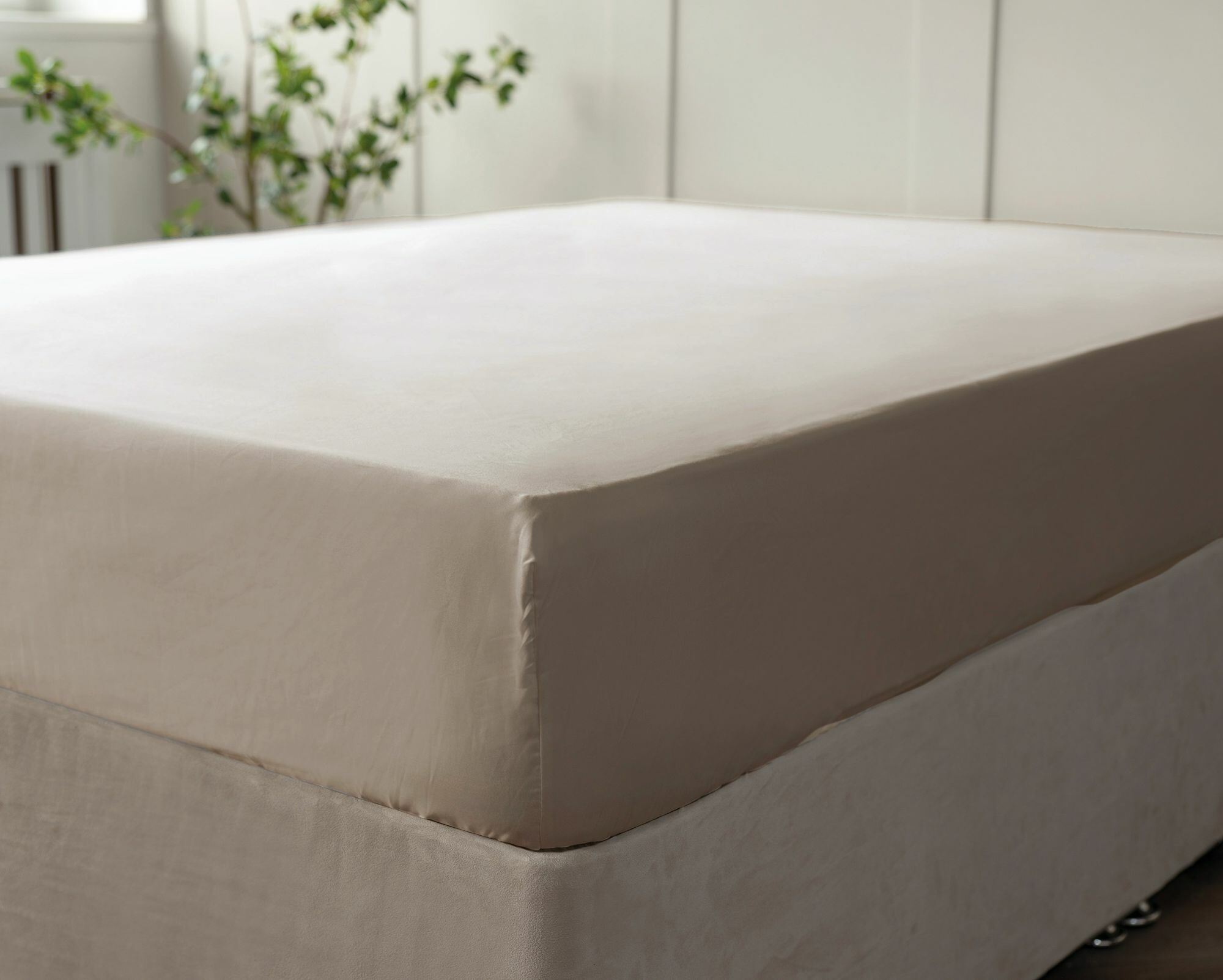
The Best Fabrics for Wrinkle-Free Sheets
Consider these top wrinkle-free fabrics and their unique qualities to find the perfect bedding that suits your lifestyle and improves your sleep experience.
Bamboo
Bamboo sheets are known for their soft feel and natural resistance to wrinkles. Made from bamboo pulp, this plant-based material has become increasingly popular thanks to its breathability and hypoallergenic properties.
While this fabric is often compared to cotton, it's far better at resisting creases. Bamboo bedding is ideal for "hot sleepers" and those with allergies, offering a convenient, low-maintenance option that's easy on the environment.
Pros:
-
Moisture-wicking properties
-
Ultimate comfort
-
Eco-friendly
-
Ideal for sensitive skin
Cons:
-
Can be more expensive than synthetic options
-
May require gentle washing
Polyester
Polyester bedding is praised for being durable, affordable, and resistant to wrinkles. Additionally, polyester sheets are known for holding up their shape and drying quickly. This low-maintenance option is perfect for anyone who wants smooth bedding without having to do any ironing.
Just keep in mind that polyester isn't as breathable as natural materials and can trap heat, so "hot sleepers" may want to consider other fabrics.
Pros:
-
Strong wrinkle resistance
-
Durable
-
Budget-friendly
-
Easy to wash
Cons:
-
Can trap heat
-
Doesn't feel very soft
Polycotton blends
Polycotton blends bring you the comfort of cotton and the practicality of polyester bedding. The synthetic fibers from the polyester add wrinkle-resistance and durability, while the cotton fibres contribute softness and temperature regulation.
This ever-popular and budget-friendly fabric is ideal for busy households looking for an everyday bedding solution.
Pros:
-
Wrinkle-resistant
-
Breathable
-
Affordable
Cons:
-
Known to pill over time
Cotton
Cotton bedding is soft, breathable, and known for its temperature-regulating properties. While 100% cotton sheets are not naturally wrinkle-resistant, Egyptian cotton sheets are usually treated to increase their resistance to creasing.
Different cotton weaves also differ in their wrinkle performance. For example, sateen sheets are smoother and less prone to creasing, while percale cotton has a crisp feel but may wrinkle more.
Pros:
-
Natural fibre
-
Breathable
-
Softens over time
-
Cotton bedding is a classic choice
Cons:
-
Wrinkles easily unless specifically treated
Microfibre
Microfibre sheets are made from finely woven synthetic fibres, which offer an ultra-soft feel with excellent wrinkle resistance. These lightweight sheets are a practical choice thanks to their stain-resistance and quick drying properties. An additional plus is that they don't require ironing.
The only downside is that microfibre sheets are known to trap heat as they aren't as breathable as natural fabrics. Overall, they are a great option for busy households with young children.
Pros:
-
Wrinkle-free
-
Low maintenance
-
No ironing required
-
Affordable
-
Dries quickly
Cons:
-
Can trap heat
Choosing the Right Size Bedding for Fewer Wrinkles
The size of your bedding significantly impacts how smooth and wrinkle-free it looks. Sheets that are too small can pull tightly across the mattress, causing tension and bunching in certain places, while oversized sheets may gather or sag, leading to creases and folds.
For a crisp, neat finish, always choose bedding that matches your mattress dimensions, including depth. Fitted sheets with deep pockets are especially helpful for thicker mattresses or those with toppers.
The right-sized bedding not only looks better but also stays in place overnight, helping maintain a smoother appearance with minimal effort.
Which Fabrics Tend to Wrinkle the Most?
Now that you know which fabrics are best for wrinkle-free bed linen, let's take a look at some of the bedding materials that are naturally prone to creasing.
Linen
Linen bed sheets are made from the fibres of the flax plant. This fabric is often praised for its breathability, durability, and textured feel. However, it’s also well known for its tendency to wrinkle, often within minutes of making the bed.
While some people love the casual, lived-in look, others may find the creasing too high-maintenance. Linen softens with every wash and remains a luxurious choice for those who don’t mind a bit of natural wrinkling.
Pros:
-
Breathable
-
Durable
-
Long lifespan
-
Temperature regulating
Cons:
-
Wrinkles easily
-
Can feel rough
Rayon
Rayon is a semi-synthetic fabric made from plant cellulose. While this material is known for being soft, smooth, and draping beautifully, rayon is also highly prone to wrinkling. This can be incredibly frustrating if you are after a smooth, neat appearance in your bedroom.
Blending rayon with other fibres can improve its crease resistance, but it often requires careful washing and occasional ironing to maintain a neat appearance.
Pros:
-
Soft
-
Lightweight
-
Affordable
Cons:
-
Wrinkles easily
-
Not durable
-
Can shrink when washing
Silk
Silk bedding is the epitome of luxury, which is why it's commonly used in 5-star hotels. This fabric is smooth, lightweight, and gentle on skin and hair. However, it’s also delicate and highly prone to creasing.
While many people choose silk for its beauty and health benefits, it does require extra care to keep it looking pristine. Wrinkles in silk can be difficult to remove and may need steaming instead of ironing to avoid damage.
Pros:
-
Luxurious feel
-
Good for skin and hair
-
Temperature regulating
Cons:
-
May require ironing and steaming
-
Expensive
-
Delicate to maintain
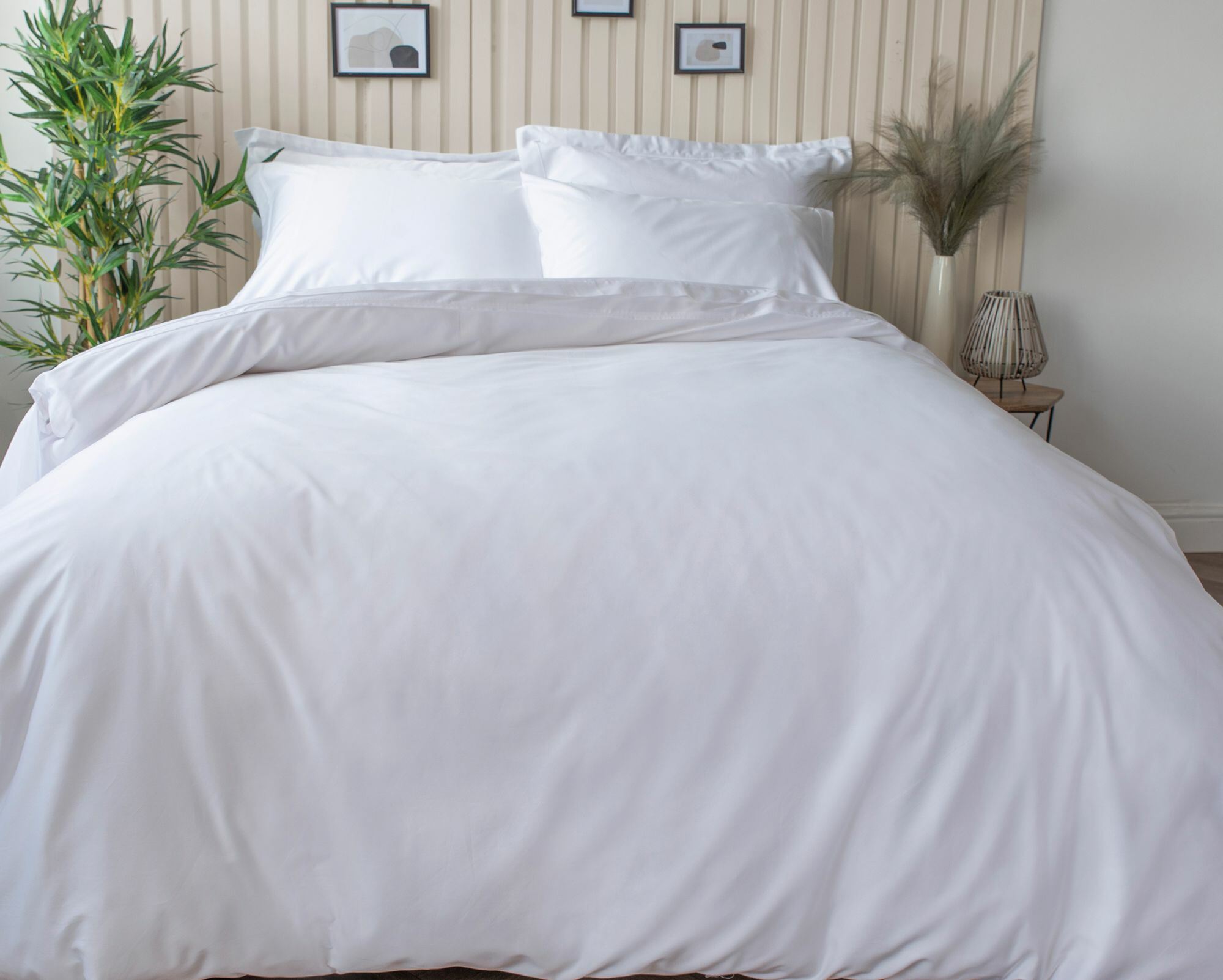
Why Do Some Fabrics Wrinkle More Than Others?
The tendency of a fabric to wrinkle depends on its fibre structure and weave.
Long, straight fibres, such as the ones found in polyester, are far less likely to wrinkle than the shorter fibres found in cotton.
Then there's the thread count, which refers to the number of threads per square inch. A high thread count with a tight weave is a lot less likely to wrinkle than a low thread count with a loose weave.
While wrinkles can be annoying, they are often a sign of natural fibres and breathable fabrics, which offer comfort and durability. So, if you prefer these, you can keep creasing at bay with proper care.
How to Care for Wrinkle-Prone Bed Linen
To minimise wrinkles in your crease-prone bed linen, first read the specific care instructions provided with your sheets. In most cases, you want to prioritise gentle washing and drying, so here are some tips:
-
Use cool or lukewarm water
-
Choose a gentle wash setting
-
Opt for a mild detergent
-
Wash sheets and duvet covers separately to avoid tangles
-
Avoid overfilling the washing machine
-
Don't leave the bed linen in the washing machine for too long
Whenever possible, air dry your linen to reduce wrinkles naturally. If using a tumble dryer, choose a low heat setting and shake out the linen beforehand. Ironing slightly damp sheets can also help you achieve a crisp finish, so your bed stays smooth and inviting.
FAQs
What other factors should I consider when buying a bedding set?
When purchasing new bedding, consider the following factors: size, durability, breathability, antibacterial properties, sustainability, brand, and personal style. Take time to choose linen that meets your needs and improves your bedroom’s comfort and aesthetic.
Does ironing damage your bed linen over time?
Yes. Ironing can cause damage to your bed linen, especially if you are using the wrong heat settings. Incorrect ironing settings can scorch or weaken fabrics, reducing their lifespan. Certain types, such as percale sheets, shouldn't be ironed at all due to their delicate nature.
Can using two pillowcases prevent wrinkles?
If your pillowcase is a bit too big for your pillow, using two pillowcases can help smooth out the fabric and provide a less wrinkled appearance. Using two pillowcases can also help protect your pillow and extend its lifespan.
Should I line dry my bedding if I want to avoid wrinkles?
Yes, line drying is a great way to help minimise the wrinkles in your bedding. When hung on a line, the weight of the damp fabric pulls the bedding flat. Just make sure to use pegs to keep it in place.

